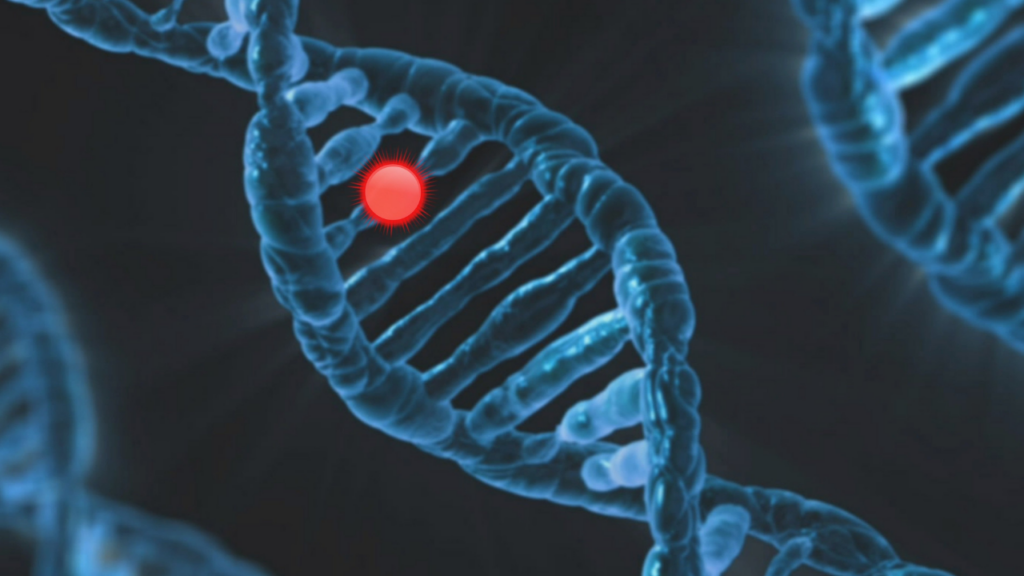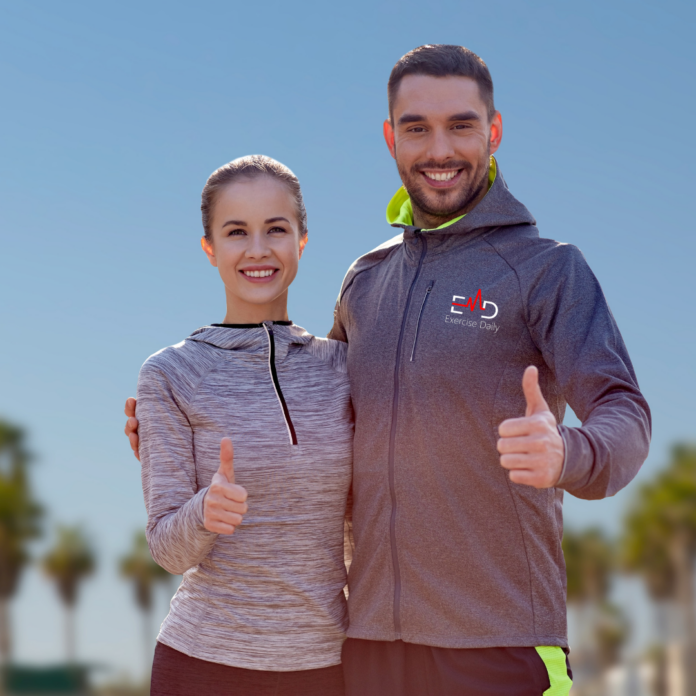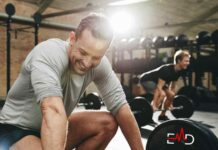Table of Contents
Exercise Daily – We define heredity is defined as all of the characteristics that are handed down biologically from parents to children. Heredity influences the overall state of your health to some extent. In this article, we will explain why it is not possible to change hereditary conditions.
Physical characteristics such as the color of your hair and eyes, the shape of your nose and ears, as well as your body type and size, come down to you from your parents. You also inherit some fundamental intellectual qualities as well as predispositions to certain illnesses.
How Genetics Influence Athletic Ability?
What factors influence one’s athletic ability? And what are the upper and lower limitations of human athletic performance?
Although no one imagined a human being could run the mile in four minutes and change, Roger Bannister achieved precisely that in 1954, and soon after, many more followed.
Every year, hundreds of athletes compete in ultra-marathons, Ironman triathlons, and 24-hour competitions, with many breaking and setting new records in the process. Is there a limit on how much you can spend? What are the elements that influence human performance in sports?
The nutritional, motivational, and environmental elements, as well as technological breakthroughs in sports equipment (running shoes, swimsuits, skis, bicycles), are all widely accepted by physiologists as being responsible for major gains in athletic performance.
However, after taking these advancements into consideration, it is possible that genetics plays a role in sports performance limitations. In particular, the genes that influence cardiovascular endurance and muscle fiber type have an impact on athletic ability. However, we will explain why it is not possible to change hereditary conditions.
The Influence of Genetics on the Development of a Person
Genetics influence us in a variety of ways, including our ability to perform well in sports. Training, nutrition, and a variety of other elements all contribute to the development of our potential. Genes may have a role in determining how much potential there is.

It is possible that you have the genetic potential to be a great athlete. However, if you live a lifestyle that is characterized by overeating and inactivity, you are unlikely to realize that potential.
Someone with low genetic potential may learn to compensate for their limitations and develop into a competent performance.
Physical characteristics such as strength, muscular size and composition (fast or slow-twitch), anaerobic threshold (AT), lung capacity (including flexibility), and endurance (to a certain degree) heavily depend on genetics and heredity. Hence, we can’t change them.
Cardiac capacity, or the ability of the heart to transport adequate oxygen (through the circulation) to the working skeletal muscles, is a significant barrier for endurance athletes. Genetics has a significant role in determining this as well.
The capacity of muscle tissue to efficiently utilize oxygen and generate ATP (adenosine triphosphate). It is the fuel that facilitates muscular contraction and movement and is the other constraint for endurance athletes.
The effectiveness of this mechanism is determined by maximal oxygen consumption (VO2 max).
The Influence of Genetics on Training
Exercise, food, and other external variables may all have an impact on how your body reacts to your genetics. According to research on aerobic endurance, some individuals react better to training than others. These evidences explain why it is not possible to change hereditary conditions.
Consequently, even if you have a low genetic potential for endurance, you may react well to exercise and develop your potential to a greater extent than someone who has genetic ‘talent’ but who does not respond well to training.
Training also improves heart efficiency. However, heredity may determine the amount to which this improvement occurs. Athletes that are genetically endowed will have a much stronger reaction to training. They will have a significant increase in the number of mitochondria in their cells.
The mitochondria are organelles present in cells that are responsible for the production of ATP. As a result, the greater the number of mitochondria a person has, the greater their efficiency.
Physical traits such as balance, agility, response speed, and precision are less influenced by genetics than others. Hence, you may enhance many of these abilities with appropriate training.
Factors that influence performance in athletes
Other elements, apart from genetics and training, maybe manipulated by athletes and their coaches. This helps to enhance their overall performance.
Optimum Nutrition for Sports
The food and nutrition plan followed by an athlete has a significant impact on their athletic performance. Bonking is usually caused by a lack of glycogen, dehydration, or a combination of the two.

Athletes may prevent this by teaching their bodies to burn fat when their glycogen levels begin to deplete. In this way, they can work by delivering energy to their working muscles on a continuous basis during an event.
They can change their non-hereditary factors quite well. However, the researchers explain why it is not possible to change hereditary conditions.
Training in Mental Capabilities
Any athlete may learn to master mental skills training methods such as imaging and visualization. In addition, he should learn ways for coping with performance anxiety, given enough time and effort put in.
Utilizing these skills, in addition to knowing the tactics and strategies of the activity, using adequate equipment, and avoiding injuries, are all important elements in sports performance that have nothing to do with heredity.
Conditions that can be altered by training
Power
Power is the combination of speed and strength. In essence, it refers to how quickly you can create a maximum amount of force. Sporting events that require sheer strength, in brief, all-out attempts are known as “power events.”
Power athletes include Olympian weightlifters, football players, and gymnasts. The development of increased power may also be beneficial for players in other sports such as basketball, volleyball, and tennis.
Jumping to retrieve a rebound necessitates the use of leg strength. However, spiking a volleyball with force necessitates the use of both upper- and lower-body strength. All of these are non-heredity conditions and can be changed.
Other than these conditions, such as lung capacity, explain why it is not possible to change hereditary conditions. Fast-paced strength-training routines, such as the following, may help you gain more power by mixing resistance with speed.
- Clean and jerk lifts
- Kettlebell swings
- Plyometric box jumps
- Pushing a weighted sled while sprinting
Speed
When you think about speed, you may think of a race like the 100-meter sprint, which takes place every year. Speed, on the other hand, is a matter of perspective. An elite 100-meter sprinter must be very quick, yet only for a short period of time (approximately 10 seconds).
If a marathon runner wishes to improve their speed in order to set a new personal best, they might aim to reduce their per-mile race pace from 10 minutes per mile to 9.5 minutes/mile. It is a pace that they would have to maintain for slightly more than four hours.
These two fictitious athletes practice in different ways, but they both have the same goal: to get quicker. As a result, depending on the sport you’re preparing for, your speed training will fluctuate.
High-intensity interval training (HIIT), regardless of the sport, is one of the most effective methods of increasing speed. For this kind of training, participants must put up an all-out or almost all-out effort for certain periods of time. This follows a specific interval of relaxation.
It continually puts your aerobic and anaerobic systems to the test, educating your muscles, heart, and lungs. Hence, this helps them acclimate to operating at greater levels of effort on a consistent basis.
Faster reaction times may be achieved by interval training, which involves short bouts of high-intensity exercise tailored to your particular sport. However, it still proves and explain why it is not possible to change hereditary conditions.
Agility
Agility is defined as the ability to move fast and change direction with ease. Basketball players, for example, are extraordinarily quick and dexterous. They must be able to move in all directions, leaping, sliding, twisting, and backpedaling in reaction to the movement of the ball.
In order to adapt and alter the route at the drop of a hat, their bodies must be trained. Exercises that improve foot speed and direction shift are prevalent in agility drills. These include the following:
- Use an agility ladder to develop precise foot placement while moving quickly and steadily up and down the ladder.
- Try out Cone drills by setting up cones in a “T” or star form, and then run, slide, backpedal, or change direction depending on which cone you’re approaching in a given direction.
Coordination
Many sports and hobbies, such as badminton, golf, soccer, basketball, football, racquetball, archery, softball, ultimate Frisbee, and others, need excellent hand-eye (or foot-eye) coordination.
In order to do any of these tasks, you must be able to observe an external object and react correctly.
Consider the actions of striking a golf ball off a tee, collecting a fly ball, or blocking a shot on goal in a hockey or soccer game as examples of blocking. Exercises such as the following may help you improve your coordination:
- Juggling
- Dribbling a ball
- Playing catch
- Jumping rope
- Throwing objects at specific targets
Balance
Gymnasts, yogis, skaters, and surfers all rely on highly perfected balancing abilities. This helps them to be able to engage in their respective sporting activities. Balance does not depend on genes and explain why it is not possible to change hereditary conditions.
The term “balance” refers to your capacity to modify your body posture in order to maintain your upright stance.
Specifically, it is concerned with proprioception, or the ability to recognize where your body is in space. It also includes the ability to make modifications to your posture when your center of gravity shifts as you move.
The ability to maintain balance is essential for many sports. And it is also essential for a wide range of tasks where balance is necessary for improved performance and safety. For trail runners, balance training may assist them to avoid rolling their ankles or suffering a fall.
To improve your balance, try the following exercises:
- Standing yoga poses
- Standing on one foot
- BOSU ball workouts
- Using balance discs to perform squats, lunges, and push-ups
When you do regular strength training motions on an unstable surface, you are simultaneously building your strength and balance. Hence, it is an excellent combination.
Reaction time
The amount of time it takes for you to respond to external stimuli is your reaction time. When you think about it, imagine yourself in a tennis match. The greatest competitors respond nearly instantly when the ball comes off their opponent’s racquet.
The strength of your mind-body connection has a significant impact on your reaction time. Your eyes see an external stimulus, your mind interprets the input, and your body responds in line.
A large part of this mind-body response is based on the individual’s prior understanding of the sport or activity. Tennis professionals can nearly quickly read and anticipate the movement of a ball while they are playing competitively.
They are able to respond more rapidly (and correctly) to the stimuli because they have gained this expertise. Sport-specific reaction-time training is common, but the following activities might also be beneficial:
- Protecting the goal as other players try to score (soccer, hockey, lacrosse)
- Fielding a ball (softball, baseball)
- Playing table tennis
- Tools such as lopsided reaction balls
Frequently Asked Questions
Is it true or false that factors that influence physical fitness include heredity behavior and environment?
Yes, it’s true that heredity behavior and environment influence physical fitness. Among the environmental factors that influence physical fitness is one’s living situation, access to exercise facilities, financial level, and membership in social organizations.
Can all factors that influence our physical fitness be controlled?
Some of the elements are under our control, but not all of them are. Healthy workout habits can only be maintained in specific types of living situations. In general, you must accept personal responsibility for your physical fitness.
Is it true or false that mental and emotional health can be improved through exercise?
Physical activity may prevent and improve a variety of health conditions, such as high blood pressure, diabetes, and arthritis. In studies on depression and anxiety, researchers discovered that in addition to the psychological and physical advantages of exercise, the latter may also aid to enhance mood and decreasing anxiety.
Also read: Why Does My Facial Hair Grow So Fast?
Take Away
A hereditary condition is one that comes down to us from our parents via our genetic code, which we normally call DNA. These pieces of evidence explain why it is not possible to change hereditary conditions.
A number of genetic diseases are hereditary in nature, meaning that we inherit them from our parents via chromosomes. Because you are unable to replace the whole of this system, you will be unable to remove a genetic ailment from your body.
Share in the comments section below, how well did you do in changing your non-heredity conditions by training.












